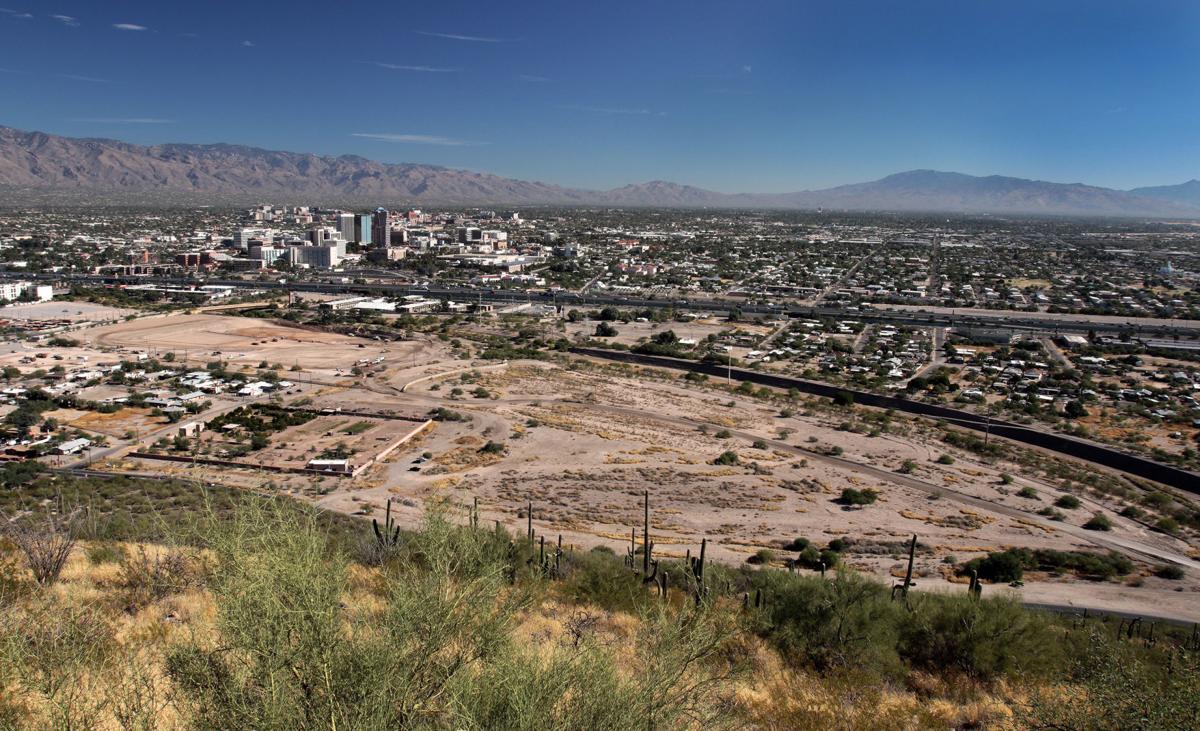тDonтt be celebrating just yet, homes,т the voice barked through my telephone receiver.
I knew heтd call. I have a sixth sense about when I.K. Bruto, my longtime imaginary friend, will call to talk about changing УлшжжБВЅ.
тYou know why Iтm calling,т he almost snickered.
I did but I didnтt want to play along. тWanna talk about Trump?т I asked. He didnтt respond. тHow about gun control?т Still silence. тOk, letтs talk about Rio Nuevo,т I said, feeling as if Bruto had disappeared and I was talking to no one.
тNow weтre talking,т he growled.
Tuesday, the Rio Nuevo board of directors voted to allow its chairman, Fletcher McCusker, to discuss with the Tohono Oтodham Nation the future of the old city landfill at the eastern base of Sentinel Peak, the site of УлшжжБВЅтs birthplace. The land is the ancient home of indigenous peoples who occupied the banks of the Santa Cruz River and is the site of the Spanish colonization beginning in the late 1600s.
People are also reading…
тItтs an important conversation,т McCusker said at the board meeting, adding, however, тCanтt say where this will go.т
The landfill, which the city of УлшжжБВЅ operated in the 1950s through the т60s, left the land with daunting development challenges. Still it is valuable property as commercial and residential development fills УлшжжБВЅтs urban core and spills out into the gentrifying downtown-area barrios.
Last year a local cycling enthusiast and real estate agent proposed to Rio Nuevo that the landfill be converted into a bicycle-pedestrian park, which would include a velodrome, a venue where cyclists could train for competitive races or enjoy for leisure. That idea prompted an outcry of opposition from west-side residents, historical advocates and others, including Ward 1 City Councilwoman Regina Romero, who wrote in her February newsletter that тa Velodrome belongs elsewhere, not on УлшжжБВЅтs birthplace.т
тPeople are finally coming around to oppose the bike thing,т Bruto said. тBut if the Nation and Rio Nuevo could agree on a deal, it should be plastered all over your newspaper.т
Bruto, whose crescendoing voice began to sound like a south-side preacher, hit his stride.
тIf the Tohono Oтodham people were to take possession of the land, that would be hugely symbolic. How often, if ever, have the original inhabitants of S-cuk Son been able to retake their stolen lands?т he said, using the indigenous name of the Tohono Oтodham village that existed at the foot of тAт Mountain and from which УлшжжБВЅ derives its name.
Yes, it would be. As Josefina Cardenas, a resident of nearby Barrio Kroger Lane told the board, тRio Nuevo has the opportunity to deliver the land to its respectful place.т
There have been informal talks about a land deal, but weтre a long way from anything resembling a plan between the two entities for the 22 acres bounded by Mission Lane, South Grande Avenue, the Santa Cruz River and West 22nd Street. A representative from the Tohono Oтodham Nation could not be reached for comment, but McCusker briefly said at the board meeting that Rio Nuevo understands that the land was home to people stretching back to pre-Hohokam, indigenous people who predated the Tohono Oтodham and later a colonial site.
But the same challenges that Rio Nuevo faces in remediating the landfill would still be present for the Tohono Oтodham, McCusker wrote me in an email Friday.
тNothing is likely to happen elsewhere without some resources, partnerships,т he wrote.
After the city closed the dump, it left тa 45-foot deep hole and 50 acres of methane-producing landfill. The cost of that remediation has been the biggest barrier for our version of Rio Nuevo, about $1 million an acre.т
But if the Tohono Oтodham and Rio Nuevo were to reach an agreement, there are options for the land that do not include building structures, like a velodrome or an office building such as the Caterpillar regional corporate office that is going up adjacent to the vacant land.
The idea of a Sonoran Desert park remains viable and appropriate, Diana Hadley told the board. Hadley, who lives across the street from the landfill and is active in neighborhood, historical and ecological initiatives, said remediation costs for a public park could be significantly less than the figure quoted by Rio Nuevo.
тBut Iтm not ready to celebrate just yet,т Bruto said.
I figured as much. Bruto is often skeptical, jaded about promises made and promises not kept for УлшжжБВЅтs barrios. He can recite a litany of broken promises and desecration of history.
тYeah, Iтll give Rio Nuevo some props for saying itтs willing to talk,т Bruto said, as his voice began to trail off. тBut you know what they say about all talk and no action.т
I understand, I said to no one. Bruto had hung up.
But heтll call again. Iтm sure of it.
Ernesto Portillo Jr. is editor of La Estrella de Tucsón. He can be reached at 573-4187 or netopjr@tucson.com. On Twitter: @netopjr





















